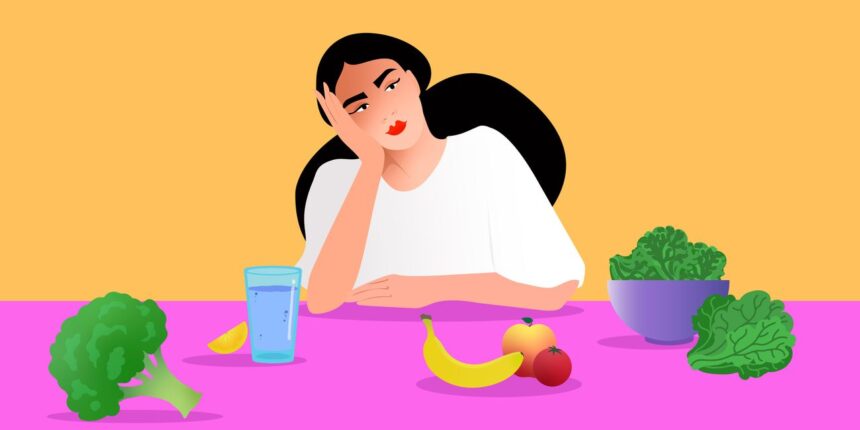While not as common, restrictive eating habits can also be amplified in those with ADHD, Dr. Pumar explains. “What’s happening with anorexia is perfectionism,” she says. The emotional dysregulation that comes with ADHD can fuel negative emotions and self-talk that come up for people with anorexia. This may make you think that nobody will love you unless you’re perfect, says Dr. Honos-Webb. These thought distortions can then make you feel like you need to restrict your calories.
All this being said, many people with ADHD tend to experience disordered eating habits, regardless of whether they have a diagnosed eating disorder. We asked experts to explain the food-related patterns that ADHD often feeds into, and how to address them.
4 eating habits that are common with ADHD—and what you can do to change course
Certain themes are at the helm of each habit, including impulsivity, emotional dysregulation, executive dysfunction, and hyperfocus. Below, experts explain how each eating habit can be connected to your ADHD symptoms, plus offer tips on how to break them so that they don’t break you.
1. Putting off or avoiding grocery shopping and opting for takeout
We’ve all been there before: Time gets away from us and before we know it, our fridge and pantries are nearly empty. However, for people with ADHD, procrastination may be more of a pattern than an occasional whoops! moment.
“Executive dysfunction and overwhelm are the main culprits when it comes to grocery shopping,” Madelyn Larouche, RD, aka the ADHD Dietitian in Charlotte, North Carolina, tells SELF. “We struggle with planning and time management, and are motivated by things that we’re interested in: novelty, and urgency,” Larouche, who has ADHD herself, says. This is why ordering takeout can seem so enticing—it’s often tasty, easy, and doesn’t require a lot of planning.
Additionally, not feeling confident about what to buy at the grocery store can make you feel overwhelmed, which can lead you to quit before you even start. “ADHDers struggle with multistep activities,” Dr. Stewart says. In other words, it can be hard to see each step clearly (search for recipes, make a list, plan a time to go shopping, etc.), which can complicate the planning process.
What to do: What resolves your grocery shopping overwhelm may look different than what works for another person with ADHD, and that’s okay—there’s no one right way to do this.
Larouche offers a program called Food Freedom with ADHD, and one of her tips for reducing takeout orders is to simplify your grocery list. She instructs her clients to pick out groceries that will make two different breakfasts, lunches, and dinners for the week. “Make a grocery list of what you’ll need and stick to it,” she says. “The simpler, the better. Use shortcut options like microwave rice, pre-cut veggies, or pre-cooked proteins. This will reduce the steps and time involved in the cooking process and you’ll be more confident to execute.”
Read the full article here



